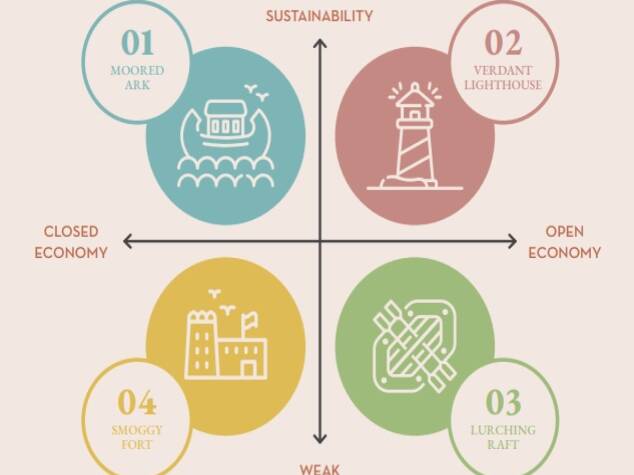Population Ageing
As the Organization for Economic Co-operation and Development (OECD) mentions in its report (OECD Pensions at a Glance), over the last 40 years the number of people over the age of 65 as a share of people of working age (15-64 years) in OECD countries, has increased from 20% to 31%, and by 2060 this share will likely have doubled to reach 58%. “Population ageing is expected to be particularly rapid in many countries, including Greece”, the report states . The relevant share in Greece is estimated at 37.8% in 2020 and at 79.7% in 2060. Greece’s workforce -people aged 15 to 64- is projected to decrease by at least 35% by 2060, whereas in OECD countries it will decrease by 10% on average.
Rapidly ageing population in OECD countries continues to put pressure on their pension systems, underlines the Organization for Economic Co-operation and Development (OECD) in the above report. According to a recent UN report , by 2050, one in four people living in Europe is expected to be aged 65 and over.
According to that report, in 2050, Greece will hold the 4th place in the world among countries experiencing the biggest reduction in their working age population. In addition, according to OECD data (2018), Greece will suffer the largest decrease in its total productivity index (among EU countries), due to the effects of its ageing population . Population ageing has created a new reality for the EU-27, leading to labour supply reduction and economic challenges.
The ageing population will create new markets in the near future and will contribute to an increased demand for services in fields that require innovation such as health systems, infrastructure, transport, communications and technology. The development of the “silver economy” is based on the assumption that in the future people will enjoy good health, live longer, and the retirement age will gradually rise. Meanwhile, it is estimated that the reduction of the workforce will be offset by the intense automation caused by new technologies.
This is confirmed by OECD studies, which conclude that the ageing population in most OECD countries will increase pressure on health services, long-term care systems and public finances, whereas the consequent ageing of the workforce will restrain the performance of the economy. Science and technology, especially ICT applications, will play an important role in helping older people stay as healthy, autonomous and active as possible. Innovation in high as well as medium-tech industry is the key dimension of sustainability in the new economic models that are being developed.

Global population qrowth
In 1950, five years after the United Nations was founded, the world population was estimated at about 2.6 billion people. It reached 5 billion in 1987 and 6 billion in 1999. A global campaign called “7 billion actions” was launched to commemorate the world population landmark of 7 billion people, which was reached in October 2011. According to a 2018 UN study, the world population is expected to grow by 2 billion people in the next 30 years, increasing from 7.7 billion today, to 8.6 billion in 2030, 9.7 billion in 2050 and potentially around 11 billion by 2100. Σελιδα 19 This dramatic growth has been largely driven by the increase in the number of people surviving to reproductive age and has been accompanied by significant changes in fertility rates, increasing urbanization and accelerating migration. The global fertility rate, which fell from 3.2 births per woman in 1990 to 2.5 in 2019, is projected to decline further to 2.2 births in 2050. However, despite the decreasing fertility rate, the global population will continue to grow, mainly because of the increasing life expectancy. These trends will have far-reaching implications for future generations. Demographic projections reveal a world divided into two groups: in the first one the population is growing, whereas in the second one it is shrinking. Sub-Saharan Africa and South Asia (Nigeria, Tanzania, Ethiopia, India and Pakistan) are projected to increase in population. In addition, of particular interest is the population increase in countries at the EU’s southern borders (e.g. Egypt alone will add 21 million inhabitants). The population in the EU’s eastern neighbouring countries is either shrinking or growing at a slower pace, following EU’s demographic trends. Overall, the populations of more than 50 countries will decrease in the coming years. Understanding global population trends and anticipating impending demographic change is vital to achieving the 2030 Agenda for Sustainable Development. The Agenda stresses that people are at the heart of sustainable development, reflecting the ideals set out in the Action Plan of the International Conference on Population and Development, adopted in Cairo in 1994. The population trends observed in recent decades show that there has been significant progress until today in several of the Sustainable Development Goals (SDGs). Global population growth results in more food and housing needs, population movement (migration), depletion of natural resources, urban impoverishment, increasing pressure on the environment and climate stability, as well as increasing energy needs. More food needs will cause agricultural production to double in four decades, water consumption to increase by 30% by 2030, and housing demand in urban areas to increase by three billion people.
Europe has recognized that overcoming these complex and interconnected challenges requires research and innovation, in order to achieve rapid, coordinated and sustainable changes in lifestyle and resource use across all levels of the society and the economy. The well-being of European people and of future generations is depended on the way the necessary transformations are carried out.
To address the consequences of global population growth, people must radically change their lifestyle and seek innovative solutions for the production, consumption, processing, storage, recycling and disposal of biological resources . In addition, the anticipated challenges can be addressed with both known and new innovative technologies of applied engineering, and their sustainable application in practice.
Key Points
- Employment and economic growth
- Sustainability of public finances, health and retirement systems
- Social cohesion, family models and intergenerational relationships
- New services and products focused mainly on the elderly
- Pressure on systems and policies for research and development, due to declining youth participation (Brain Drain / competition persists)
- Possible further increase of urbanisation









